[Wanderlust Tips December 2017] Magnificent natural landscape, fresh air, world-class ski resorts and countless attractions for all ages, Gangwon-do has all the reasons to keep visitors coming back for more when the winter is knocking on the door of South Korea.
[rpi]
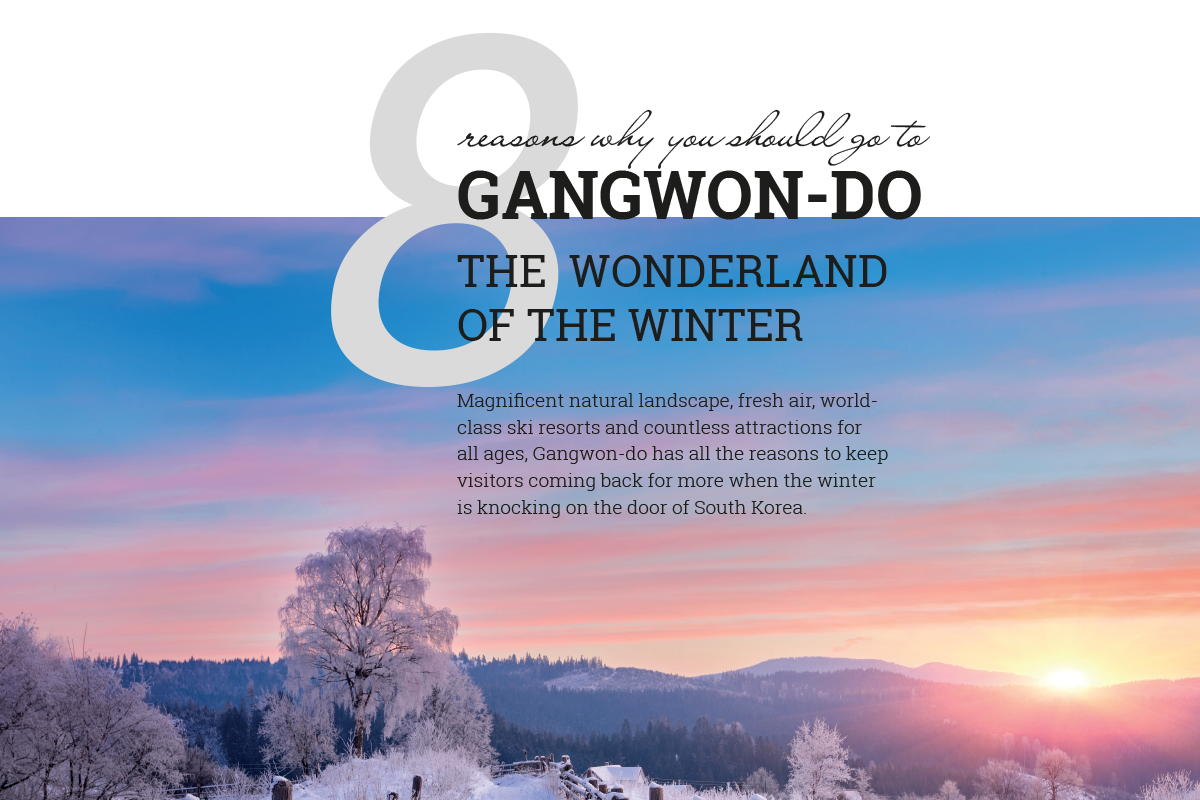
1. TAEBAEKSAN NATIONAL PARK – STUNNING PARADISE LIKE SCENERY
The sacred mountain of Taebaek (Thai Bach) attracts tourists with fantastic views of hoar frost as well as azaleas blooming in the spring. When the winter comes, visitors are also overwhelmed by the sight of a yew forest with 2,800 trees covered in pure white snowflakes, including the 500-year-old yew tree that symbolizes the stability and longevity of the mountain. The end of December is a perfect time to admire the breathtaking views of the Sea of Japan from the top of the mountain or to enjoy the excitement when sliding down the 30-metre long ski tube. There is also a Snow Festival that takes place every year around this time with many giant sculptures displayed on Danggol Square such as Russian palaces, guardian deities of the zodiac, and pumpkin carriages.
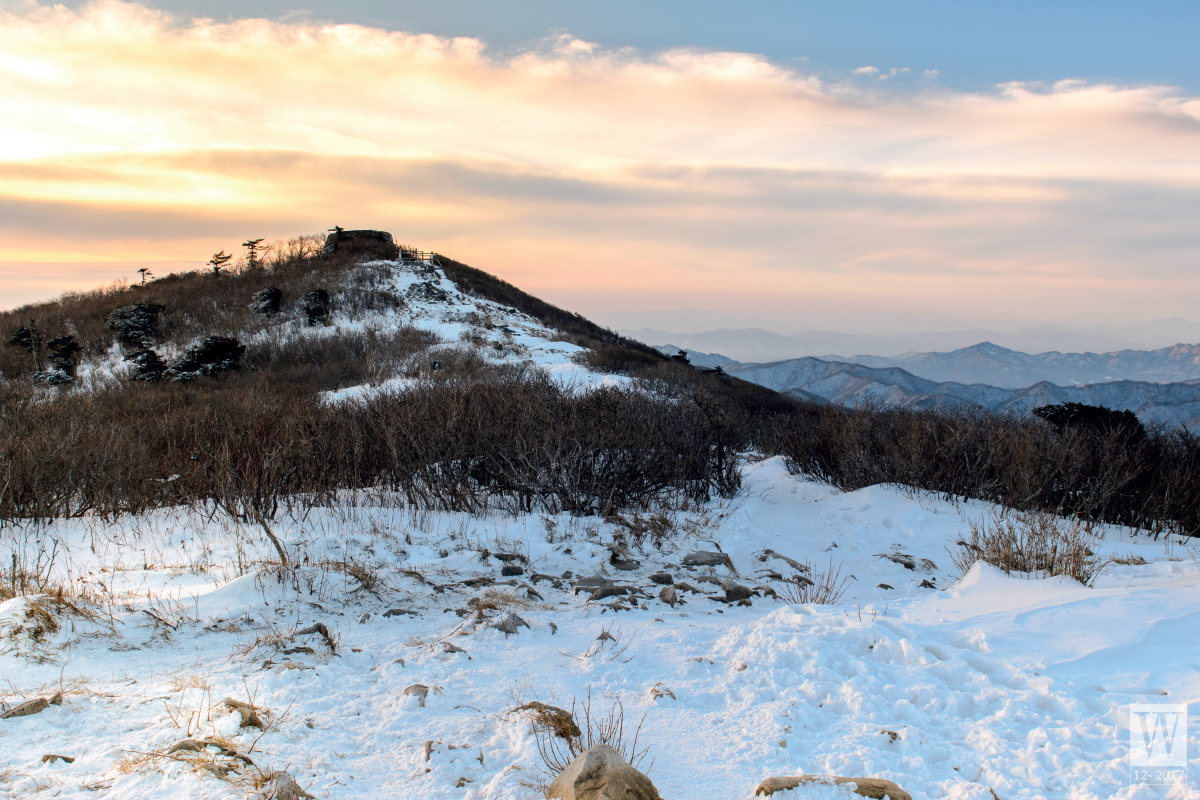
Add: 168 Cheonjedan-gil, Taebaek-si
Tel: +82-33-550-0000
Website: taebaek.knps.or.kr
2. YONGPYONG – THE MOST LONG-STANDING SKI RESORT IN SOUTH KOREA
Yongpyong Resort, which was opened in 1975, is one of the largest ski resorts in South Korea with 28 slopes, 14 lifts, and the longest slope called Rainbow Paradise with the length of 5,600 metres, offering utmost experiences. Equipped with outstanding facilities, Yongpyong resort has successfully hosted many international events, and it is currently preparing to host the upcoming PyeongChang Winter Olympics in 2018. Those who have never skied do not need to worry because there are 10 easy slopes for beginners and 7 average slopes. In addition, visitors will find countless other ski resorts in Gangwon-do such as High 1 Resort, Apensia Resort, Vivaldi Park, Oak Valley, and Elysian Gangchon, which are all featured with excellent facilities and picturesque scenery.
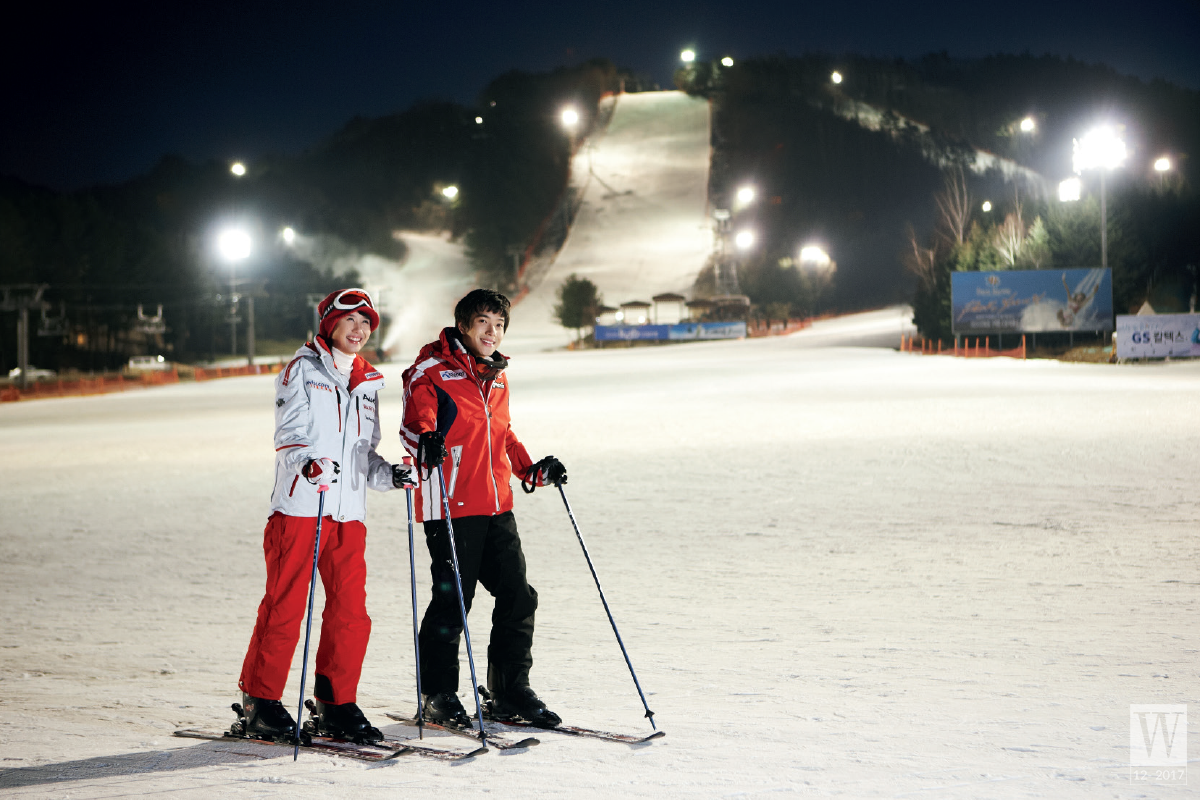
Add: 715 Olympic-ro, Daegwanryeong- myeon, Pyeongchang-gun
Tel: +82-33-335-5757/+82-2-3270-1230~1233 for foreigners
Website: www.yongpyong.co.kr
3. DAEGWALLYEONG SAMYANG – THE LARGEST RANCH IN ASIA
This vast ranch with an area of over 60 million square metres is home to countless cows (in the winter), sheep, rabbits, and African ostriches. On clear days, from the ranch’s observatory, visitors can admire the magnificent views of the beautiful sea of Japan beyond the sparkling snow.
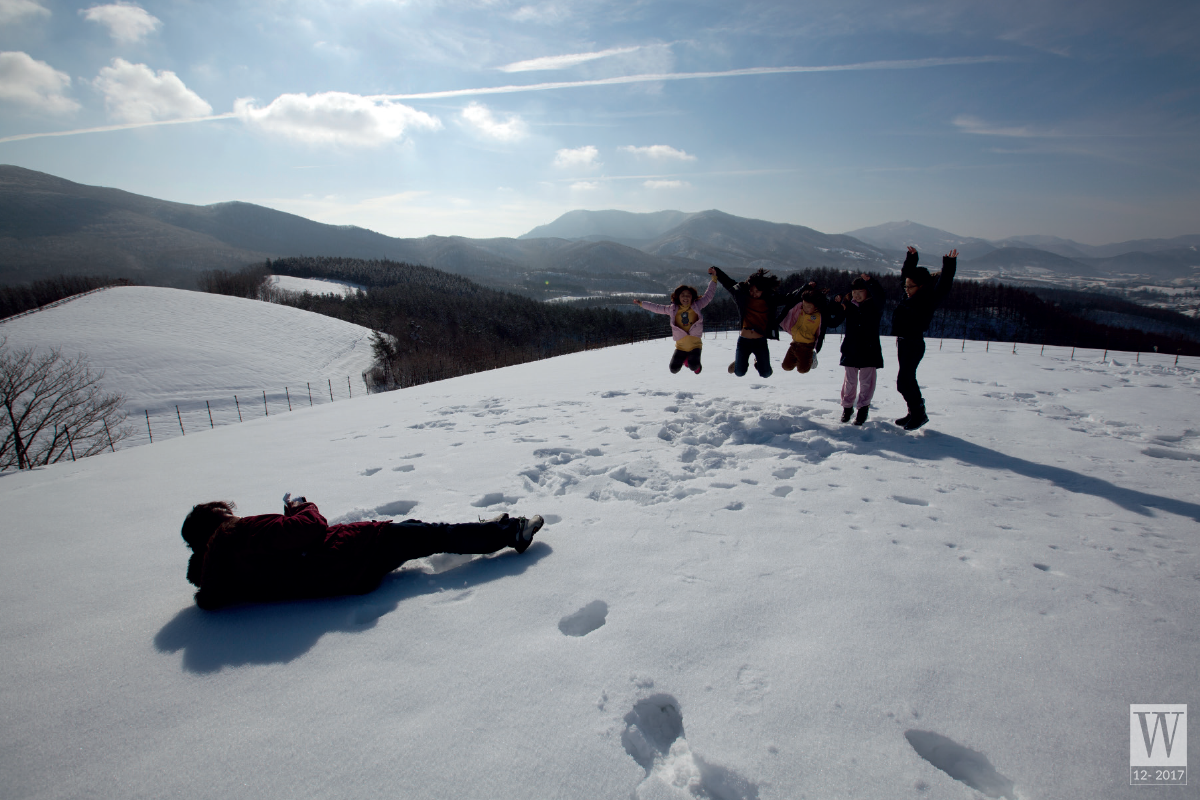
Add: 708-9 Kkotbat yangji-gil, Daegwallyeong-myeon, Pyeongchang-gun
Tel: +82-33-335-5044
Website: www.samyangranch.co.kr
Entrance fee: 3-18 years old: KRW7,000/19-64 years old: KRW9,000/65 years old and over: KRW5,000.
4. WOLJEONGSA – THE 1,000 YEAR OLD SACRED TEMPLE
Following the most beautiful trail in the pine forest of South Korea, crossing the road with brilliant lanterns, you will arrive at the 1,000-year-old Woljeongsa temple on Mount Odaesan, surrounded by an evergreen forest in the natural environment of the mountain. This is also the location of the Seongbo Museum that displays the artifacts and treasures inherited from Buddhist culture in the Goryeo Dynasty. Not only admiring the 9-storey stone tower and beautiful turquoise sculpture of the temple, visitors can also experience the life of a monk, practice yoga, witness the Buddhist rituals and practicewalking meditation through the forest to purify the body and the soul.
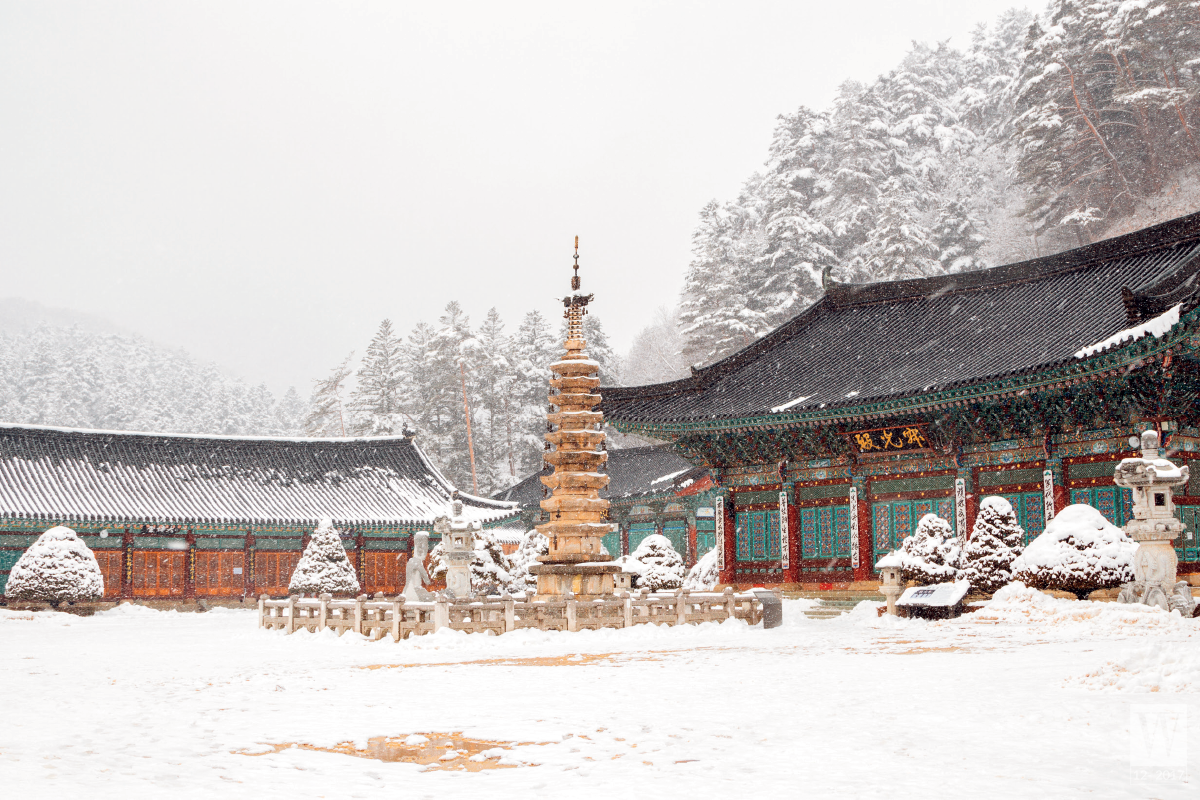
Add: 374-8 Odaesan-ro, Jinbu-myeon, Pyeongchang-gun
Tel: +82-33- 339-6800
Website: www.woljeongsa.org
Ticket price: KRW3,000 per adult/KRW1,500 per teenager/KRW500 per children.
5. NAMI ISLAND – WINTER SONATA
It was not surprising that the romantic scenes of South Korean drama Winter Sonata were filmed on this island. The best time to visit Nami is when the ginkgo tree canopies begin to change colors. The center of the island is a mesmerizing green lawn surrounded by chestnuts and birch trees. In addition, a zoo, a botanical garden, a large lake with small wooden boats and other amusement parks will bring you sweet and delightful moments with your loved ones.
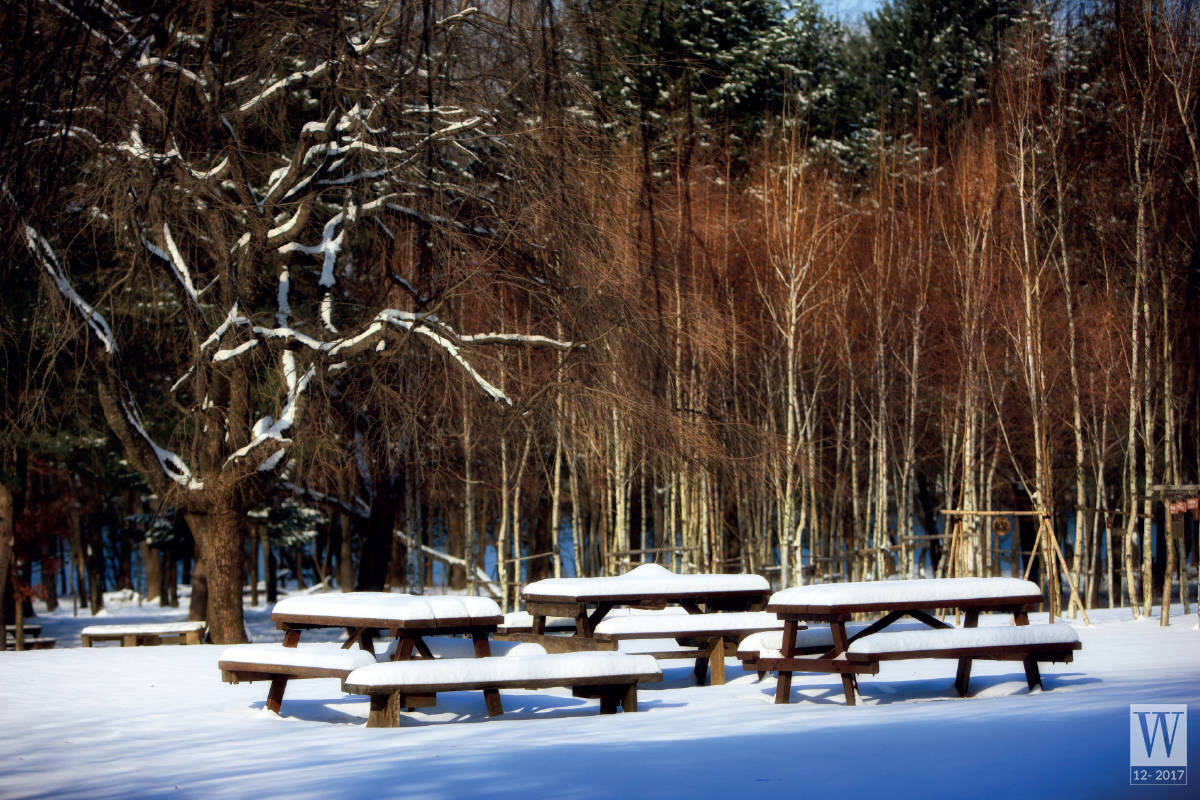
Add: 1 Namiseom-gil, Namsan-myeon, Chuncheon-si
Tel: +82-31-580-8114
Website: www.namisum.com
6. SAMTAN ART MINE – A MUSEUM ON THE RUINS
The coal mine which had been abandoned since 2001 has now been restored to a cultural and arts center where artists can develop their passion. There are more than 100,000 works collected from over 150 countries, along with equipment and tools used by miners.
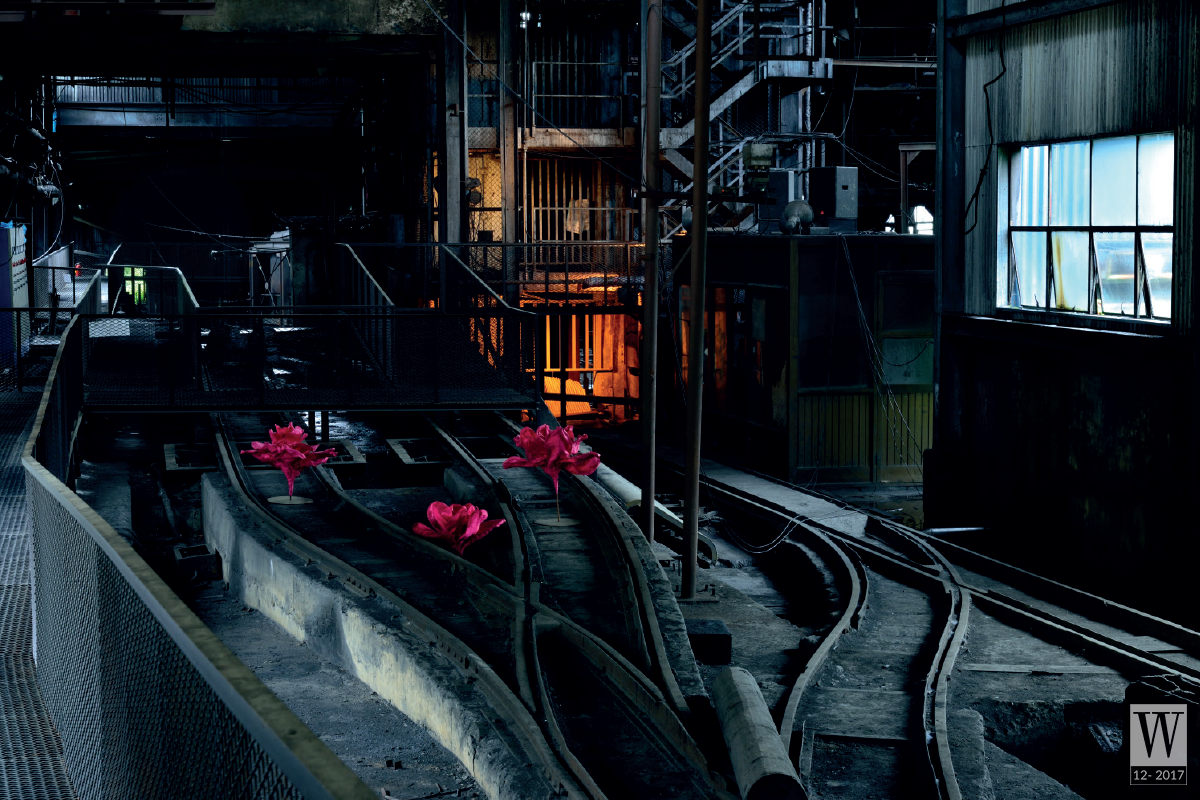
Add: 1445-44 Hambaeksan-ro, Gohan-eup, Jeongseon-gun
Tel: +82-33-591-3001
Website: www.samtanartmine.com
Ticket price: Adult: KRW13,000/high school students: KRW12,000/Elementary students: KRW12,000/Elderly people aged 65 and over: KRW11,000.
7. GANGWON-DO CUISINE – INDULGE IN THE FLAVOUR OF THE KIMCHI LAND
Sancheoneo Raw Cherry Salmon
There is an extremely unique winter festival in South Korea, which is called the Hwacheon Sancheoneo Ice Festival. The cherry salmon raised in the Hwacheon area is the freshest, softest and tastiest, so the raw cherry salmon dish is really good; especially, it tastes the best from December to February next year, after the spawning season.
Ogolgye – Marinated silkie chicken cooked over an open flame
Under the fluffy feathers, the black, sweet and fragrant chicken tastes the most delicious after being thoroughly marinated and grilled on hot coals. Eating this 20-year-old dish with wild vegetables and enjoying hot soup cooked from chicken bones will help you re-energize quickly.
Sundubu Spicy Soft Tofu Stew
The spicy soft tofu stew has been a very popular traditional dish in Gangwon-do since the 14th century. Being cooked in ark clam broth, the dish has a sweet taste and melts in the mouth with the spice of chili pepper and attractive aromas.
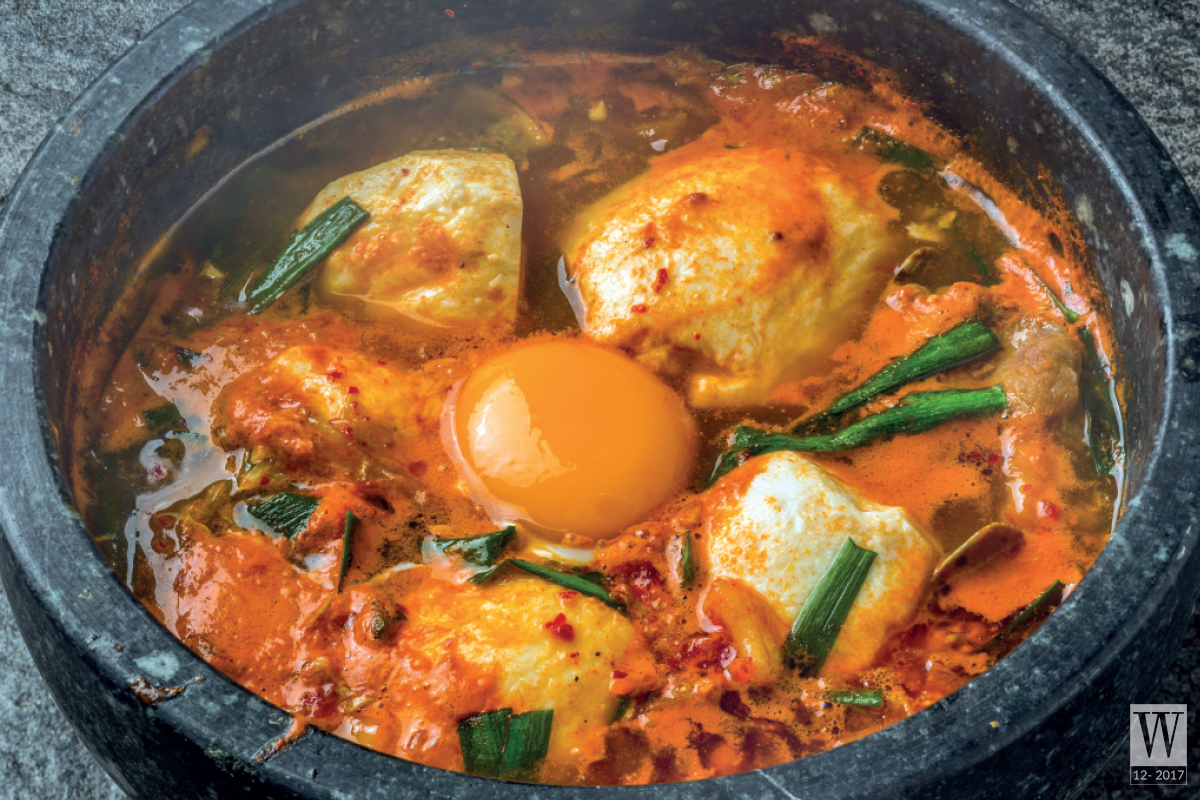
Dakgalbi – Spicy stir-fried chicken with vegetables
Boneless chicken is marinated in soy sauce, salt, and pepper. The vegetables including cabbages, carrots, sweet potatoes, onions, radishes and perilla leaves are arranged in the pan. Then a special kind of spicy sauce made from finely ground garlic, ginger, hot chili, soy sauce, sugar is put on top. The chicken is cooked until it is soft and the vegetables are full of flavor oil. The taste of this dish will definitely make it impossible for you to stop eating. When there is a little sauce and vegetables left in the pan, you can mix it with rice and enjoy.
8. UNIQUE WINTER FESTIVALS
Daegwallyeong Snow Festival
It is considered the biggest snow festival in South Korea with countless interesting activities for families. Not only can you admire sculptures on the snow but also participate in a singing contest, semi-naked marathon contest, hiking, music and literature events, as well as some sports events such as snow skiing or ski motor driving.
Hwacheon Sancheoneo Ice Festival
Add: 135-6, Daegwallyeong-ro, Pyeongchang-gun
Time: The 21st Daegwallyeong Snow Festival is held from January 19th to February 5th at Dagwallyeong
Hwacheon Sancheoneo Festival
It is considered one of the biggest winter festivals in the in South Korea. Sancheoneo, a species of salmon, is an endemic fish kind in Gangwon-do province. This fish can only live in fresh and clean water with an average temperature of under 20°C. After buying tickets, each visitor will be given a fishing rod to find an available ice hole and set the hook. In addition, visitors can also take part in fun activities such as noodling, ice-skating or playing soccer on ice.
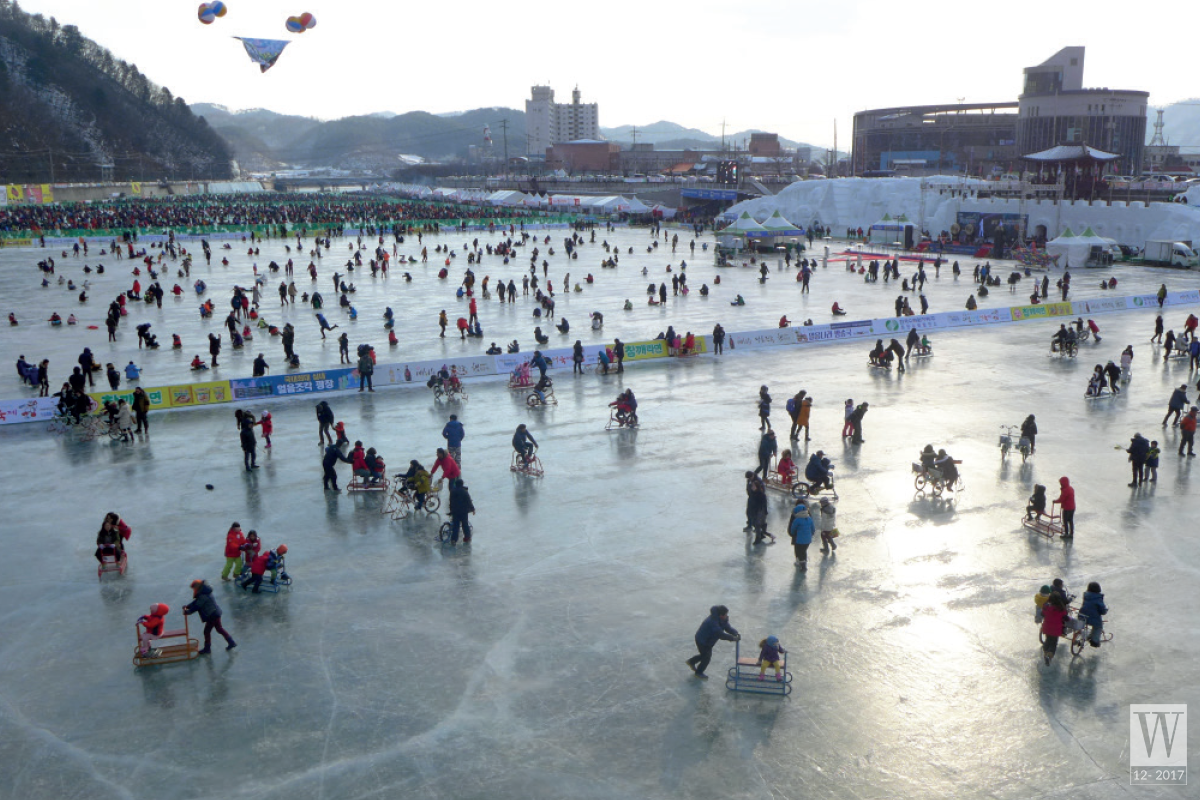
Add: Hwacheon-eup, Hwacheon-gun
Time: This festival will take place from 6thto 28th, January 2018.
Ticket price: The fishing cost ranges from KRW8,000 to KRW12,000.
W.TIPS
VISA
To apply for a visa to South Korea, you need to prepare some important documents such as passport, visa application in Korean or English, proof of employment and financial capacity (such as Certificates of land use rights with you as the owner, a minimum savings account of USD5,000 or VND100 million), and some other personal identification including your ID card.
FEES
– USD20 for visa application with a under-90-day period (usually in tourist visa form). USD50 with single entry visa application for a more-than-90-day period. The processing time is usually about 8 working days from the date of application.
– Note: From February to April of 2018, Vietnamese, Indonesian, and Filipinos tourists entering South Korea through Yangyang Airport, Gangwon-do Province near the site of the 2018 Pyeong Chang Winter Olympic Games will be temporarily allowed visa-free entry.
– Where to apply for visa:
+ Hanoi: the Embassy of Korea (Republic) in Hanoi at 7th floor, Charmvit Building, 117 Tran Duy Hung.
+ HCMC: South Korean Consulate General in Ho Chi Minh City at 107 Nguyen Du Street, District 1.
WEATHER
Gangwon-do has the heaviest snowfall in South Korea, so the best time to travel to Gangwon-do is in the autumn and winter. The summer is from May to September with the highest temperature being around 21°C, the weather is very pleasant but particularly wet in July. When coming in winter from October to February, you can admire the forest changing leaves or covered in snow, and experience the fascinating winter sports here. The lowest temperature is in January, about -10°C at night.
VEHICLE
From Vietnam, the most popular choice is to take a flight to Seoul airport for an airfare of VND5 million, and then take another one from Incheon Seoul airport to Yang Yang airport in Gangwon-do province. Or from Incheon, you can take a train or a fast intercity bus to Gangwon-do (it takes from 1 hour to more than 3 hours depending on the type of transportation); it is more time-saving to take the fast intercity bus. For Elysian Gangchon Resort, you can get there by subway.
Hong Nhung | Wanderlust Tips

